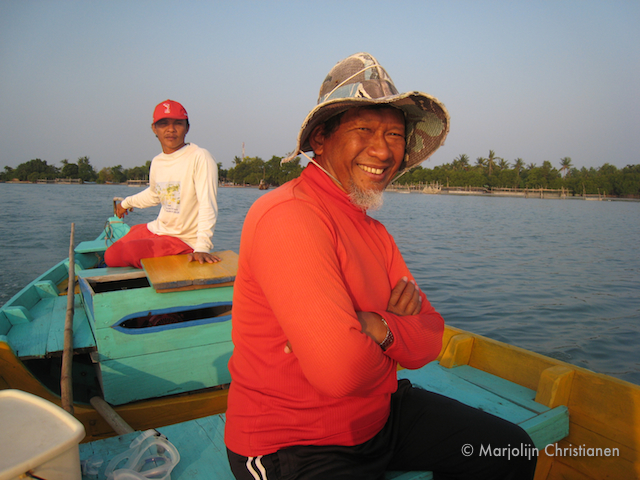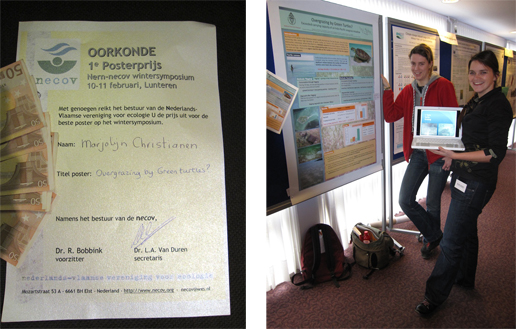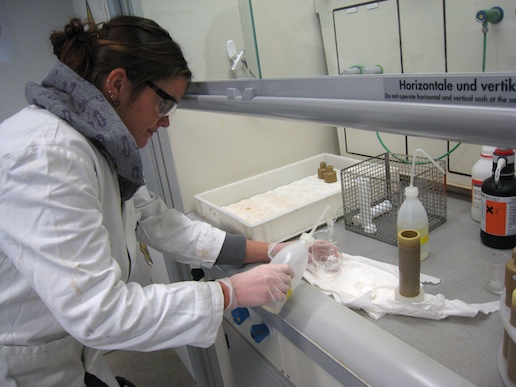*Next fieldwork period from Augustus 2009*
Are you looking for a research project for your MSc specialisation? AND:
- Interested in Marine Ecology and Ecosystem wide processes?
- Would like to participate in fieldwork in the Derawan Archipelago, East Kalimantan, Indonesia
- Would like to gain experience in fieldwork in an experimental setting and in chemical laboratory technique
- Highly motivated & enjoys working in field and lab?
- Interested in being a co-author on a scientific paper?
Then please send a 1-2 page CV and a letter with your motivation to me: m.christianen@science.ru.nl
Background
The objective of our project:
- We wish to address the possible shifting states of seagrass in relation to eutrophication and turtle grazing, using field experiments in the Derawan Archipelago, Kalimantan, Indonesia.
- In parallel, we wish to obtain insight in the variation in production and community composition of seagrass assemblages between sites at diffent distance to the river and relate this variation to spatial and environmental variables.
Most field experiments will be carried out in the coastal zones of the Berau and Mahakam rivers, East-Kalimantan, Indonesia. Ecosystems states (e.g. eutrofication, turtle grazing) and possible shifts between them will be provoked in a series of experiments involving turtle exclosures, turtle grazing mimicking and nutrient enrichments, both in the field and in the lab. The research will be carried by Radboud University Nijmegen (The Netherlands) in close cooperation with the Indonesian Institute of Science (LIPI, Indonesia) and the Netherlands Institute of Ecology in Yerseke.
What you will do:
Participate in fieldwork and exclosure-experiments. Participate in lab-work, collecting toxicity and biogeochemical data. We can discuss the details of the internship to create an exciting project that encompasses both your research interests and the goals of our project.
Your project could start in the middle of 2009, with fieldwork (3-6 months) starting from beginning of August 2009. Due to application deadlines of funding (and visa preparations) It is advised to start early < 6 month before the start of your project with the preparations.
In Dutch:
Studenten gezocht: Stage Mariene Ecologie Indonesie,
Als je op zoek bent naar een buitenlandse stage voor je master in Mariene Ecologie / Biologie lees dan bovenstaande beschrijving even door. Ik ben op zoek naar studenten die bereid zijn om voor hun master project ook veldwerk uit te voeren in het buitenland. Indonesie op het eiland Kalimantan voor verschillende maanden. Heb je interesse, neem dan contact met me op.





